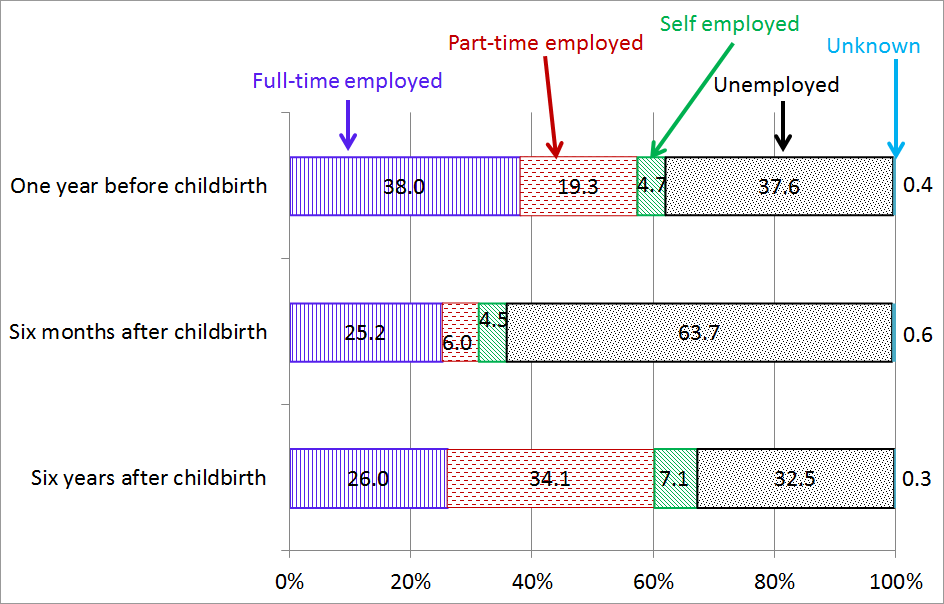Column Finance and the Social Security System 2018.06.21
【Aging, safety net and fiscal crisis in Japan】No.132: Employment Rate of Mothers after Childbirth
In Column No.97, I demonstrated a sharp increase in the employment rate of females aged 25 to 39. In May 2018, the Ministry of Health, Labor and Welfare released statistics to reconfirm this fact. Figure 1 shows how mothers who gave birth in 2010 returned to work until their child turned six years old and entered elementary school. Of mothers who decided to give birth a year later, the percentage of those who were working was 62.0%, of which full-time, part-time, and the self-employed were 38.0%, 19.3%, and 4.7%, respectively. This is 7.5% higher than 54.5% (= 32.5 + 16.3 + 5.7) of mothers who bore a child in 2001 (Figure 2). The employment rate of mothers when their child became six increased from 55.8% (= 16.9 + 30.1 + 8.8) of mothers who bore a child in 2001 to 67.2% (= 26.0 + 34.1 + 7.1) of mothers who bore a child in 2010. Additionally, among mothers who were full-time employed before childbirth, the percentage of those who maintained full-time employment until their child became six years old also increased from 28.9% to 40.7%.
Figure 1: Employment rate of mothers of children born in 2010

Source: Ministry of Health, Labor and Welfare
Figure 2: Employment rate of mothers of children born in 2001

Source: Ministry of Health, Labor and Welfare
